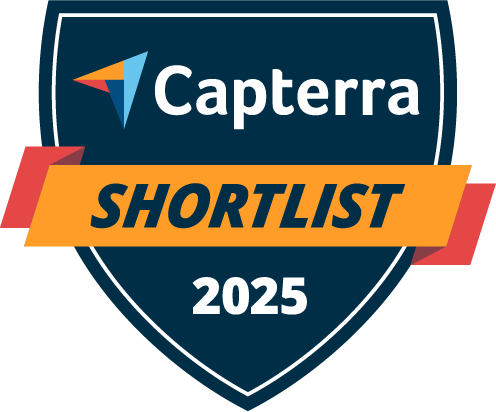The Equifax wake-up call and beyond
In 2017, Equifax became a stark illustration of a silent threat: software sprawl. The infamous data breach, costing a staggering $1.38 billion, wasn’t the result of a sophisticated cyber attack, but a simple lapse – a vulnerability in an overlooked, unused software application.
This wasn’t just a failure of patching; it was a failure of visibility. The real root cause, even now, remains shrouded in the fog of uncontrolled software.
This isn’t an isolated incident. Executives like myself, especially CIOs, are often held accountable for “negligence” when the true culprit is a lack of insight into our sprawling software estates.
Studies, like those reported by SD Times, reveal that only one in five companies possess a complete view of their software assets. This is the reality of software sprawl: a hidden, insidious challenge that demands a strategic response.
Demystifying Software Sprawl: Understanding the beast
Software sprawl, in its essence, is the uncontrolled proliferation of software licenses, many of which remain underutilized.
It starts innocently though. A drive for productivity, a desire to equip our teams with the best tools.
However unchecked, this impulse can lead to a tangled web of redundant applications, security vulnerabilities, and ballooning costs. Who wants their company to land in a mess such as this?
But it does happen. Let’s unravel the root causes of Software Sprawl
- Decentralized purchasing and the rise of shadow IT: The ease of acquiring SaaS applications, coupled with independent departmental budgets has democratized software acquisition. While this fosters agility, it also undermines centralized IT control. Shadow IT, fueled by BYOD and remote work, further complicates the landscape, creating “app sprawl” and security blind spots.
- The collision of tech stack during mergers and acquisitions: M&A activities often result in the merging of disparate tech stacks, leading to redundant applications and integration nightmares. Imagine two CRM systems, Zoho and Hubspot, each with overlapping functionalities, attempting to merge. This is “sprawl” in its most literal sense.
- Lack of robust Software Asset Management (SAM): Without clear SAM processes, software acquisition becomes a free-for-all. Orphaned applications, unused licenses, and outdated versions accumulate, creating a breeding ground for vulnerabilities.
- The “Shiny New Toy” syndrome and “Best-of-Breed” overreach: The allure of cutting-edge technology and the pursuit of “best-of-breed” solutions can lead to a chaotic software landscape. Without a strategic approach and an eagerness to implement new market tools, sometimes without thorough evaluation, companies often end up with a patchwork of incompatible systems.
The high cost of Software Sprawl: Beyond the budget

Software sprawl isn’t just a financial burden; it’s a strategic liability. Below are some of the true costs it entails:
- The hidden drain on IT resources: Redundant licenses, maintenance, and support costs of orphaned apps drain resources. Imagine 50% of your software budget wasted on underutilized applications!
- Expanded attack surface for cyber threats: Each application, especially if unpatched, becomes a potential entry point for cybercriminals. The Equifax breach is a chilling reminder of this reality.
- The audit nightmare: Demonstrating compliance with regulations becomes a Herculean task when software assets are scattered and undocumented.
- Reduced productivity: Employees struggle with multiple, overlapping applications, leading to confusion and inefficiency.
- The compatibility chaos: Disparate systems resulting from SaaS sprawl can hinder data sharing and automation, slowing down workflows and hindering innovation.
- Innovation bottlenecks: Excessive IT spending on maintenance limits investment in strategic initiatives.
Taking control over Software Sprawl: A strategic blueprint for CIOs
To effectively transform software sprawl into strategic software control, executive leadership, particularly CIOs, must adopt a proactive and systematic approach. This requires a shift from reactive management to a structured, data-driven methodology, ensuring that software investments directly contribute to organizational goals.
1. Set up foundational visibility: Implement a robust Software Asset Management (SAM) program
Begin with establishing a living SAM system, not merely a static spreadsheet. Define clear key performance indicators (KPIs) that demonstrate the return on investment (ROI) of software assets.
Deploy automated discovery and inventory tools to maintain a real-time, accurate view of software installations and licenses. Integrate license management to track usage, compliance, and renewal dates, mitigating costly overspending and legal risks.
Establish a comprehensive lifecycle management process, from acquisition to retirement, ensuring proper deployment, updates, and decommissioning.
You can leverage SAM tools to identify license optimization opportunities for reclaiming unused licenses and negotiating volume discounts. This foundational visibility into your SAM landscape is crucial for informed decision-making and strategic planning.
TAKE CONTROL OF YOUR SOFTWARE ASSETS AND MITIGATE RISK.
Don’t let software sprawl become your Equifax moment.
2. Centralize control: Set procurement and approval processes for software apps in place

Transition from decentralized, ad-hoc software acquisition process to a controlled, strategic procurement model. You can implement a central procurement portal to streamline software requests and track spending.
Get your team to conduct thorough needs assessments, evaluating functionality, compatibility, and security implications before acquiring software solutions. Ensure that all software purchases align with organizational goals and your existing IT architecture.
Furthermore, enforce policies that require departmental consultation with IT before acquiring new software or cloud services. This centralized control can ensure alignment, thereby preventing duplication of SaaS apps and strengthening your security posture.
3. Consolidate strategically: Embrace cloud migration strategies
Leverage the cloud’s potential for strategic consolidation and simplified management of software applications. Identify opportunities to migrate on-premise applications to cloud-based alternatives, reducing infrastructure costs and improving scalability across the organization.
Consistently evaluate cloud-native solutions that are easy to integrate with other leading SaaS apps and are easier to manage. You can implement a phased migration approach of transitioning from on-premise to cloud SaaS, prioritizing applications with the greatest benefits and demand among your company’s departments.
While migrating to the cloud, prioritize security, data privacy, and compliance of applications. Make sure to use cloud management tools for monitoring usage, optimizing costs, and enforcing security policies of the apps you’re transitioning to. This strategic migration can make your teams more agile and reduce complexity in workflows.
4. Optimize continuously: Conduct regular application rationalization
Systematically identify and eliminate any redundant or underutilized software apps through regular audits. Get your team to engage with department heads and end-users to understand their software needs and identify instances of orphaned SaaS.
Then, prioritize decommissioning outdated, unsupported, or insecure applications. In order to ensure seamless experience for employees, develop migration plans for users transitioning from redundant to consolidated solutions.
You can use a software asset management tool to rationalize use of such applications. Analyze usage patterns and identify consolidation opportunities. If your employees are using different versions of the same software, you can also consolidate that information via software normalization.
This continuous effort ensures that all your IT resources are efficiently allocated and you’re able to effectively mitigate any security risks associated with vulnerable software.
5. Carry out structured governance: Establish clear policies and frameworks for managing software assets

What’s a process without clear roles and responsibilities? Establish policies for acquisition, deployment, usage, and retirement of software assets and assign those to relevant folks within your team.
Implement a governance framework that ensures accountability and transparency when it comes to using SaaS apps. Then, communicate policies and procedures through training and support to your IT staff and employees.
Regularly review and update these policies to reflect technological and regulatory changes. You can also establish a software review board with key stakeholders from IT, finance, and relevant business units to keep everybody on the same page. This structured governance approach can provide a clear roadmap for controlling SaaS sprawl and ensuring compliance.
6. Enhance efficiency: Leverage automation tools
Last but not the least, use automations! They can come in very handy for streamlining inventory, license management, and deployment processes for various SaaS apps. You can implement tools that automate the process of software discovery, inventory, and license tracking. Pro tip: You can set recurring automated actions to be run after a specified time interval of your choice e.g. after every week, after two months, or even a year, etc.
Some other areas where you can use automations include: Patch management to ensure up-to-date security, efficient installations and updates, reporting and analytics to monitor usage and identify trends, and Leverage automation to enforce compliance with licensing agreements and security policies.
This enhanced efficiency reduces manual effort and minimizes human error.
Take Software Sprawl by the reins and transform IT from being a cost center to a value driver
Software sprawl is a silent threat that demands a strategic response. By implementing effective software management strategies, CIOs can transform IT from being a cost center to a strategic enabler of business growth and innovation.
By effectively managing software sprawl, CIOs can:
- Improve time-to-market for new products and services.
- Reduce the risk of data breaches and enhance compliance.
- Demonstrate IT’s strategic value through measurable ROI.
- Increase business agility and adapt to market demands.
Ready to take a stab at controlling software sprawl? Try EZO AssetSonar’s software asset management capabilities now.
Frequently asked questions
What is software/SaaS sprawl?
Software sprawl is when many applications proliferate in an org without control — redundant, unused, overlapping tools cluttering budgets and increasing security risk.
What are signs my organization has software sprawl?
Signs include lots of overlapping tools, invoices you can’t reconcile, low utilization of many licenses, poor governance around software purchases.
How does software sprawl affect cost?
It inflates subscription and licensing fees, causes waste from underused tools, increases renewal surprises, and drives spend in needless duplicate functionality.
What security risks does software sprawl introduce?
Each unused or forgotten app is a potential vulnerability: unpatched software, unknown access paths, data exposure, and compliance gaps.
Who is responsible for controlling software sprawl in an organization?
A cross-functional team: IT, Finance, Security, Procurement; plus a governance framework with clear ownership over software approvals and audits.
What role does centralized procurement play in reducing sprawl?
Centralized procurement ensures transparency, avoids overlapping tool purchases, enforces approvals, and enables price negotiation.
How often should software rationalization / review happen?
At least quarterly or biannually; ideally aligned with renewal cycles. Regular reviews help catch redundancies and under-utilized licenses early.
What is a software asset management (SAM) program?
SAM is a structured program to track, manage, and optimize software licenses, usage, contracts, and ensure compliance & efficiency.
How can automation help in managing software sprawl?
Automation helps in license discovery, usage tracking, contract renewal alerts, removing unused apps, and enforcing policies — reducing manual work.
What is application rationalization?
It’s the process of assessing your suite of applications and deciding which to keep, replace, consolidate or retire based on usage, cost, and value.
How do you detect unused or redundant software?
By monitoring login/activity metrics, mapping app function overlap, reviewing invoices, interviewing departments, and using discovery tools.
How does Shadow IT contribute to sprawl?
Shadow IT (apps procured without IT’s knowledge) increases untracked tools in the stack, bypasses governance and often leads to redundancy and risk.
What cost savings can rationalization deliver?
Eliminating unused software, reducing overlapping tools, negotiating better volume discounts — savings often run in the tens of percent of software budgets.
How can you build policies to prevent sprawl going forward?
Set governance rules: software purchasing approval flows, catalog of approved apps, thresholds for spend, periodic reviews, and enforce compliance.
How do you balance speed/innovation with controlling sprawl?
Allow pilot programs, but require sunset strategies. Use a catalog of approved tools. Ensure business units have a voice, but under guardrails. Transparency and feedback loops help.
What metrics/KPIs should CIOs track to measure sprawl control?
Metrics like # of apps procured per month, % of unused licenses, cost per user, contract renewal numbers, backlog of apps to rationalize.
How can AssetSonar help CIOs defeat software sprawl?
AssetSonar provides discovery of all software usage, central license inventory, dashboards for utilization & redundancy, alerts for renewals, and governance enforcement tools to reduce spending and risk.








